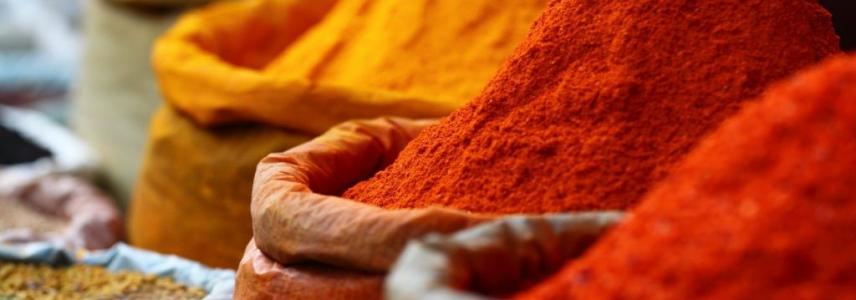Growing interest in spices from Africa and the Middle East in Europe

The growing popularity of ethnic cuisines is driving up demand for new spices and spice blends in Europe. According to leading market trend agencies Innova Market Insights and MINTEL, spice blends from Africa and the Middle East are growing quite popular among European consumers. The EU market for spices and herbs is expected to grow by 7% in the next five years. Exporters would be smart to seize this opportunity and offer new African and Middle Eastern spice blends to European importers.
Popular spices and spice blends from Africa and the Middle East include baharat, berbere, ras el hanout, sumac, zaatar, harissa, saffron, dukkah and Aleppo pepper, many of which have been recently introduced to European markets by leading European spice companies.
Different demand across European regions
Interest in new spices and connected ethnic cuisines varies between Eastern and Western Europe. Mexican, Indian, Chinese, Japanese and Southeast Asian cuisines are already firmly established in Western Europe. Spices from these origins are no longer described as new and trendy. However, those cuisines and spices are now also growing in popularity in Eastern European countries. On the other hand, Western European consumers are searching for new inspirations in African and Middle Eastern cuisines.
Examples of spices from the Middle East and North Africa (MENA) region recently introduced to Europe by European spice companies include:
- Fuchs, a leading German spice producer, is planning to introduce spices from Syria, Lebanon, Israel and Jordan to European markets. The company has already developed Jadira, a brand specialising only in food from North Africa and the Middle East.
- French company Ducros launched a new line of street food with four different spice mixtures, using baharat as the leading mixture.
- Dutch spice company Euroma introduced several African spice mixtures to its original spices line, including African barbecue or African braai, baharat, ras el hanout and zaatar.
- The British Zest & Zing created a line of spice blends dominated by blends from the MENA region.
- Cannamela, the leading Italian spice company, introduced an ethnic line of spice blends including Maghrebi couscous and Middle East kebab.
Opportunities for suppliers from North Africa and the Middle East
Developing country suppliers from North Africa and the Middle East can offer European spice companies innovative spice combinations to meet this growing demand. The MENA region has many unique ingredients, which are attractive to European consumers and growing in popularity. It seems that adventurous consumers will soon also look for other spice inspirations from other African regions, such as East and West Africa.
Stay up-to-date
To stay up-to-date on the latest developments in the spices and herbs sector, read CBI’s Market Information and subscribe to our newsletter.
This news article has been written for CBI by Autentika Global.